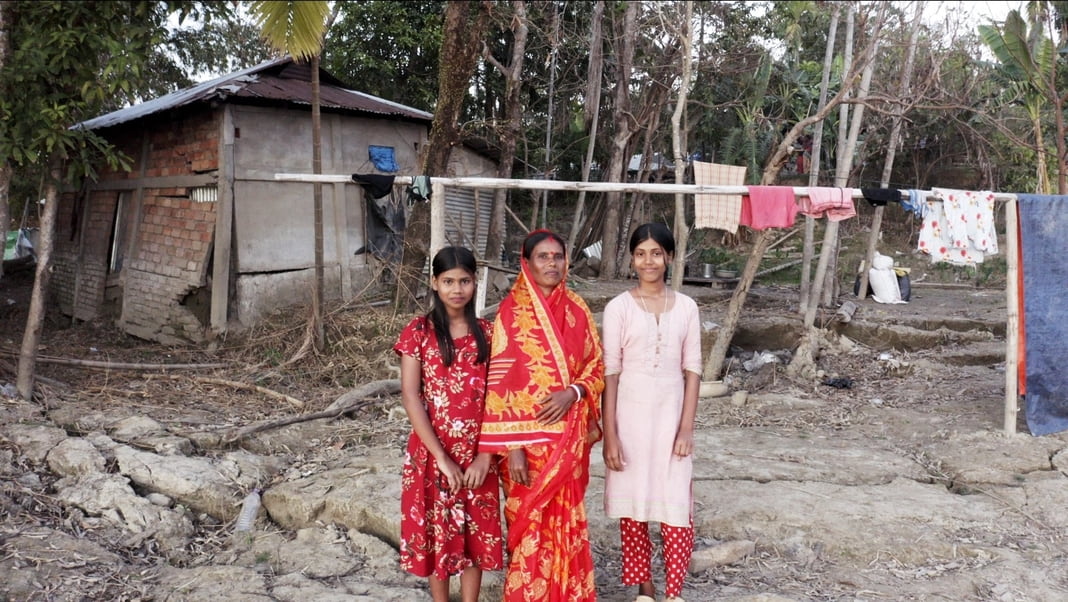Guwahati, March 20: In the wake of the 2024 Assam floods, thousands of families faced displacement, waterborne diseases, and loss of livelihoods. Among the worst affected were remote hamlets and marginalized communities who struggled to access safe drinking water, sanitation, and basic necessities. Recognizing the urgent need for intervention, UNICEF, in collaboration with the Government of Assam and European Civil Protection and Humanitarian Aid Operations (ECHO), launched a flood relief program, providing emergency support to vulnerable families across six of the worst-hit districts of Barapeta, Cachar, Dhemaji, Karimganj, Dibrugarh and Morigaon covering 1,000 households in 100 villages.
Through initiatives such as mobile water treatment units, WASH training, disaster-resilient toilets, and hygiene kits, these efforts have not only helped people recover from the immediate aftermath but are also building long-term resilience against future floods. This story is about West Kumarpada—about a family fighting to survive in a flood-ravaged home, which offer a glimpse into the realities of life after the disaster and the ongoing efforts to restore dignity and hope in affected communities.
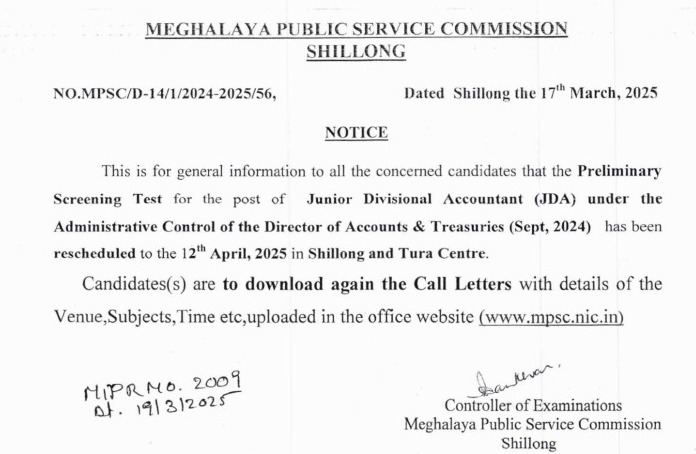
The last house standing: A story of loss and resilience
“We do not have any option but to stay in this house as long as it is possible. Moving house to another place or land requires money, and we do not have that” ~ Aarti Rani Das
Aarti Rani Das’ house stands in a dilapidated condition on the embankment of the Barak River at West Kumarpada. The walls are cracked and held up by wooden planks to prevent them from collapsing. Over time, the house has sunk deeper into the ground, now covered in silt brought in by the river. With the next flood, it may not withstand the pressure and could either disintegrate or be washed away.
“We do not have any option but to stay in this house as long as it is possible. Moving house to another place or land requires money, and we do not have that,” said Aarti Rani Das.
West Kumarpada, located in Nizjoynagar block of Cachar district, is situated next to the Barak River, where riverbank erosion poses a severe threat. With forests degrading, there is little to hold the soil during heavy rains, and in some places, the river has moved 20 km inland. This year, floods swept away all remaining houses on the embankment—except Aarti’s.
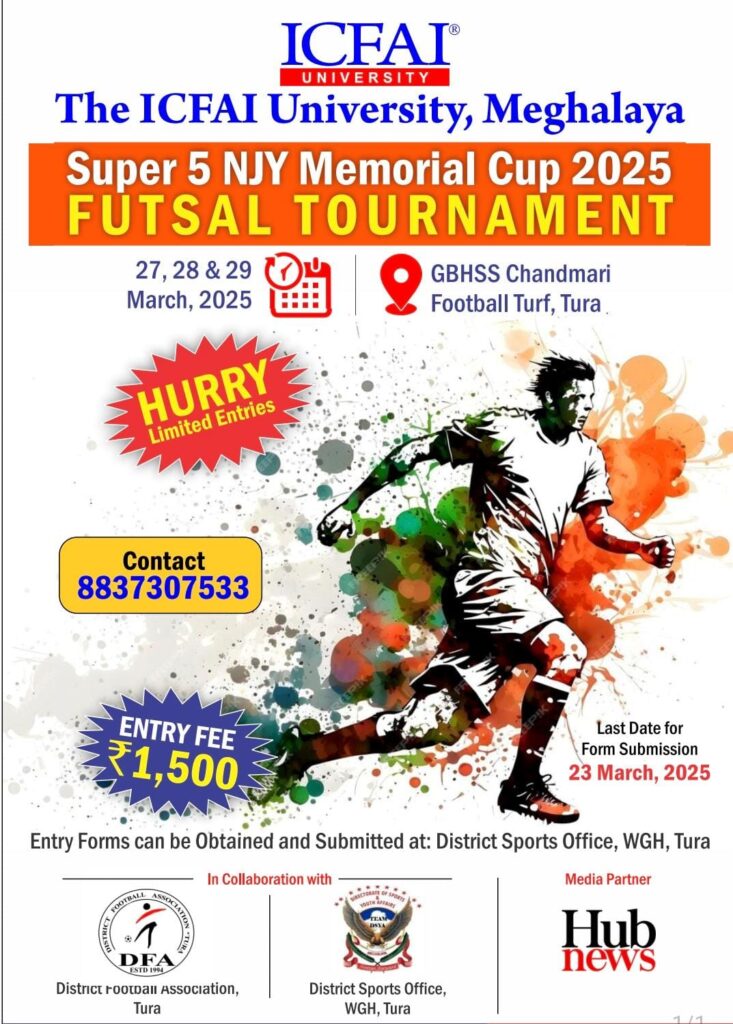
Aarti, 40, belongs to the Scheduled Caste community. Her husband is a daily wage laborer, and her eldest son is still too young to work. Her two daughters’ study at the local middle school. There is barely enough in the house for everyone as money comes in when there is work. Every year, the river floods, sometimes gradually, sometimes silently and swiftly, taking away their belongings and forcing them to start over.
“When flash floods happen, we cannot save anything except ourselves. This year, we received many essential items such as washing powder, toothpaste, toothbrushes, combs, nail cutters, sanitary pads, and panties from Deshbandhu Club as part of the flood relief. These items have helped us immensely because they will last for months. The money saved can now be used for my children’s education, food, and medicine,” said Aarti.
The sanitary pads were particularly useful for her daughters, as maintaining menstrual hygiene during floods is difficult.
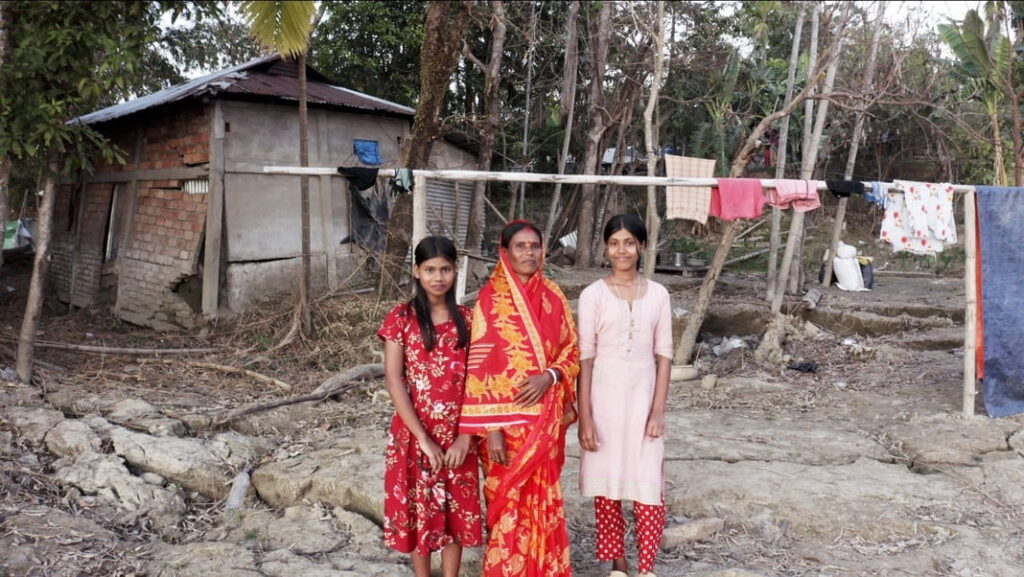
Providing Essential Relief
UNICEF India in partnership with Deshbandhu Club, DDMA, PHED, and the Community Facilitation and Resource Centre (CFRC)—a nodal government agency under DDMA and the Panchayat and Rural Development (P&RD) department responsible for disseminating information on all government schemes available in Cachar district—distributed essential items to selected households. These included chlorine tablets, water dispensers, and hygiene kits containing washing powder, soaps (both bathing and laundry), toothpaste, five toothbrushes, combs, nail cutters, five packets of sanitary pads, and panties.
“In response to the severe floods in Assam in 2024, UNICEF India supplemented the response led by the Government of Assam to enhance access to basic services including water, sanitation, and hygiene services in six flood prone and worst affected districts of Barapeta Cachar, Dhemaji Karimganj, Dibrugarh and Morigaon covering 1,000 households in 100 villages.” said Dr. Madhulika Jonathan, Chief of Field Office, UNICEF Assam & Northeastern states.
A village-level committee was established through a democratic process to identify households based on specific criteria, including those most severely affected, belonging to minority communities, or comprising elderly individuals, widows, single women, women-led families, and/or persons with disabilities. Deshbandhu Club conducted surveys of these households to finalize the list.
“As a key partner of UNICEF India, Deshbandhu Club played a crucial role in disaster risk reduction. We engaged communities, coordinated with government agencies, and identified those in urgent need of safe drinking water. Through training and technical support, we empowered communities to manage water treatment units effectively,” said Debajit Gupta, Program Manager, Deshbandhu Club.
Additionally, the village community received training on the proper use of chlorine tablets for water decontamination, as well as sanitation and hygiene practices, such as when to use soap and the correct method of handwashing with soap to enhance health protection.
“Drinking water provided through the government water pipeline gets disrupted during the
floods. We are unable to access the taps, and we have to source water from the river for
drinking and other purposes. During the floods, the river water is contaminated and even using alum is not sufficient. There are a lot of water related health issues during this time, like diarrhea, cholera and skin infection. With the use of chlorine tablets we can access clean drinking water and learning when and how to wash hands has reduced these health issues,” Aarti Das said.
Frequent displacement leaves families landless, making permanent shelter and sanitation nearly impossible. Floods destroy roads and water sources, relief camps get overcrowded, and emergency solutions wear out quickly. Without community involvement, maintaining sanitation and water facilities remains a big challenge.
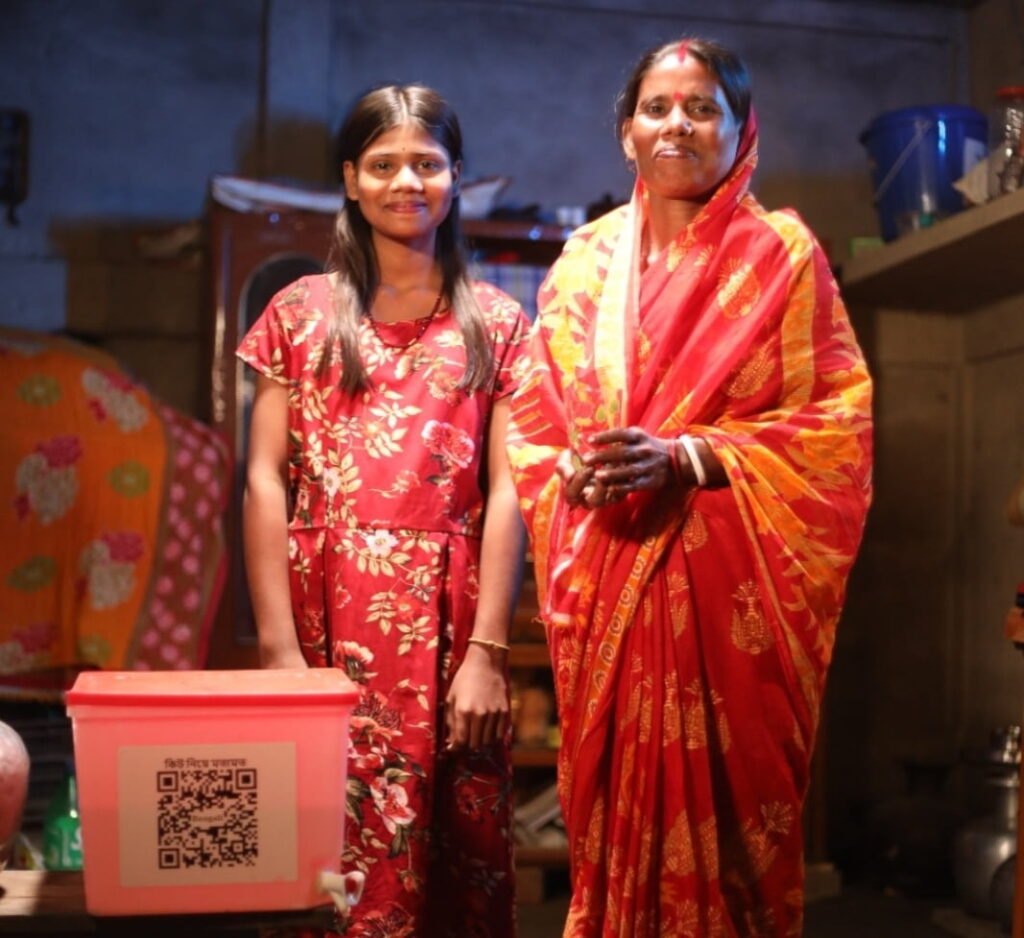
“Families like Arati Rani Das’ live under constant threat of losing everything to erosion and floods. DDMA provides emergency relief, temporary shelters, and rehabilitation support. We work on embankment strengthening, relocation assistance, and livelihood restoration—because long-term solutions, not just relief, are the need of the hour,” said Shamim Laskar, Project Officer, DDMA, Cachar district.
Building Resilient Sanitation Solutions
Recognizing the need for sustainable sanitation, UNICEF India in collaboration with partner
organizations, helped construct and rebuild 30 flood-resistant toilets in Cachar. These toilets feature raised plinths and structural reinforcements to withstand floods, storms, and even earthquakes. Built a few feet above ground level, they remain accessible during floods. Each toilet serves five to six households (approximately 20 people), and a toilet user committee—with one member from each family—ensures regular maintenance and cleanliness. The design has influenced neighboring communities, inspiring them to adopt similar flood- resilient structures.
“The Assam Flood Relief program was implemented in collaboration with European Civil Protection and Humanitarian Aid Operations (ECHO) to provide vulnerable families, especially women and children, and marginalized communities with hygiene kits chlorine tablets and water dispenser raised or disaster resilient community toilets WASH training in schools and communities, and emergency mobile water treatment and filtration units. Thanks to this support, people could have access to safe and clean drinking water, essential hygiene and sanitation facilities during and after the floods.” said Dr. Madhulika Jonathan, Chief of Field Office, UNICEF Assam & Northeastern states.
Aarti Das, who has to move to the road under tarpaulins every year, will now be able access these community Disaster Resilient toilets. Along with her, these toilets have provided women with a sense of hope and safety knowing that they will not have to face difficulty when the floods return next year.
“We have open pit latrines that get flooded every monsoon. For women, it is an arduous task to travel by boat to distant places just to relieve themselves,” Aarti shared.
But now, when the floods return next year, she and many others will no longer have to struggle for basic sanitation and hygiene.
“Access to safe drinking water has improved, and waterborne diseases have declined. Communities now understand WASH practices better, and village committees take ownership of water treatment units. Women, in particular, feel more confident in managing water safety and hygiene.” said Debajit Gupta, Program Manager of Deshbandhu Club.
Also Read: BJP intensifies outreach to defend Arunachal Pradesh Freedom of Religion Act
Also Watch
Find latest news from every corner of Northeast India at hubnetwork.in, your online source for breaking news, video coverage.
Also, Follow us on-
Twitter-twitter.com/nemediahub
Youtube channel- www.youtube.com/@NortheastMediaHub2020
Instagram- www.instagram.com/ne_media_hub
Download our app from playstore – Northeast Media Hub



